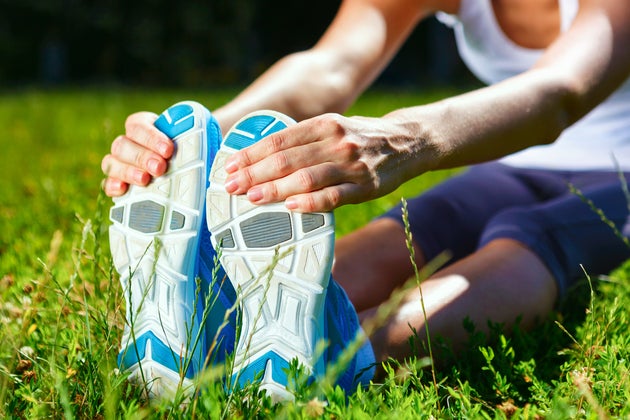New perk! Get after it with local recommendations just for you. Discover nearby events, routes out your door, and hidden gems when you sign up for the Local Running Drop.

Few training variables have been so misunderstood and misprescribed as stretching. Despite the misinformation and dearth of research, stretching enjoys universal acceptance as an activity that should engaged in by everyone, all the time. Unfortunately, the majority of the running community has also accepted a blanket approach to stretching. In particular static stretching (stretch and hold for a prescribed time) is commonplace, but there is little research to support its usage in preventing injury. In fact, it may actually cause injury.
Understanding The Research
If you happen to read a research study on stretching there is a 50/50 chance the study will show a positive effect from stretching on performance and injury reduction. The reason for 50 percent effectiveness is quite simple: it depends on who the participants in the study were. If an individual is already flexible, then being more flexible can create hypermobility which, in my opinion, is worse than being too stiff. Conversely, for a stiff person stretching may actually be beneficial. Adults in their 40s and beyond, for example, are often clinically stiff and thus some stretching might be beneficial and necessary.
You might be thinking, what determines if someone is too stiff or too hypermobile? To answer that let me introduce a more important term than flexibility: mobility. Flexibility is the maximum range of motion of a joint, typically when under passive tension (think partner stretches, or a typical hamstring stretch). Mobility on the other hand refers to achieving the optimal range of motion for an activity while the individual is actively moving the limbs. It is an important distinction.
Flexibility Vs. Mobility
It is possible that someone is so stiff their flexibility and mobility yield the same range of motion. However, I would wager that for most female runners they have far greater flexibility than what their mobility might require. For example, if an individual does a hamstring stretch while seated and practically can put their face on their knees, flexibility is far greater in the hamstring than is actually needed to run. In such an example, flexibility is way out in front of mobility and thus adding more flexibility or even maintaining the current flexibility (through continued stretching) could cause instability and create and injury.
Women, as a whole, are more flexible than men. As a whole, they tend to stretch more. However, all that flexibility could work against what women need most: stability. If I was to make my own blanket statement, I would say women need to get stronger and stretch a lot less, if at all. I know saying “don’t stretch at all” goes against what’s normally recommended, and might seem extreme, but through my own research and coaching, it is well founded.
The Joint-By-Joint Problem
Another challenge with stretching is the possibility that an individual could be hypermobile in one joint and not another. So a runner could have hypermobile ankles but have stiff hips, which is not farfetched as the hips are taking a beating because of the hypermobile ankles.
What the joint-by-joint analysis tells us is don’t just haphazardly stretch every muscle, instead just stretch the ones that need it. As a runner you know what is chronically stiff and what is not. If you are a fore-foot runner you probably have stiff calves; stretch them. However, if you don’t have stiff hamstrings or quads, leave them alone or only stretch them every other day or every three days. I have seen the problems in female runners with hypermobility and the resulting issues are far worse than being too stiff. Instead, spend more time getting stronger.
Lastly, how you stretch is also important. As mentioned, static stretching may be alright for older adults that are clinically stiff. However, if a runner wants to “stretch” as part of a warm-up and cool-down with the intent of achieving good mobility and not necessarily flexibility, dynamic stretching is a superior method.
I like to think of static stretching as deadhead stretching; you are just cranking on the muscle. Dynamic stretching on the other hand involves the neurological and cardiovascular system, which produces a primed muscle both in terms of muscle recruitment and blood flow. So much research backs the positive effects from a moving or dynamic stretch on power and muscle performance.
Stretching then is not a training variable to be used in a blanket approach. A good stretching regimen should be taken as seriously as your training plan. If executed well, a good stretch can aid warm-up and recovery, improve performance and reduce the chance of injury. Done poorly, a runner could actually be feeding injury mechanisms and negatively affecting performance.